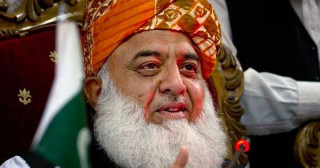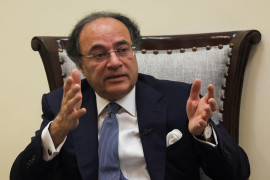modern.fakir
Chief Minister (5k+ posts)
Ottomon Sultan Selim II, Falsified History and True Perspectives
The discussion about the personality of Sultan Selim II goes back centuries, he was most likely the center of discussion even in the period of time in which he lived. This would be understandable, as his father, Sultan Suleyman the Magnificent, would be difficult to surpass in greatness. It was with Sultan Selim that the office of the Sultan became immensely more private and reserved, hence the door to open speculation about his character was also widely opened.
Due to this, we also find with Sultan Selim an obvious departure of what is accepted as ‘history’ by Western students from reality. Once a few facts are examined and logical contradictions are exposed, the propagated history of Sultan Selim II becomes very clearly an invented tale. The extent of this false history is somewhat unbelievable to those who are accustomed to what has been bought as the idea of Western ‘impartiality’ when it comes to news and history. Similarly there is often a negative consideration to those who speak out against what is considered as established fact, left to be called ‘conspiracy theorists’.
Oddly enough for a Muslim community, which some may say loves conspiracies, there has been little or no call to rally around when it comes to a false Ottoman history.
As to why there hasn’t been much opposition, it is not difficult to come to some simple conclusions. The founders of the present secular state of Turkey had little motivation to promote an accurate view of history and sought to separate themselves from the Ottomans as much as possible. With no state backing and really no people identifying themselves with the Sultans in spirit, there has been really no organized state effort to provide even an emotional rebuttal, much less a factual one which requires research as in this post. At the same time the Muslim population which turned away from Islam and abandoned the Caliphate has now revitalized a new anti-historical Islam which avoids Ottoman contributions, and in some cases, even perpetuates these myths.
Further, most people have been cut off from the actual facts since the massive cultural shift from the Caliphate to present day. Not only was the entire Ottoman language obliterated and the script of a new language forced on the population, but even ancient religious traditions such as the Azan (Call to Prayer) were being outlawed in anything other than ‘Turkish’ [1]. Furthermore, for decades, the Ottoman archives were completely sealed shut, leaving only biased 18th century Western documents as sources of Ottoman history.

[SIZE=-2]Sultan Selim II receiving Safavid Ambassador[/SIZE]
The Ottomans were notorious record keepers, from the earliest days of the Empire. The Ottoman archives are estimated to hold more than 150 million handwritten documents. Only about a quarter of them are yet classified and computerized. It is estimated that only about 32 million records are currently accessible for researchers [2]. The Turkish state is extremely selective on who gets access and it is monitored carefully, being banned without notice is quite common. The Ottoman archives store treaties, border disputes, inheritance, titles and privileges, trusts, gifts, charitable and religious foundations (vakif), court documents, land deeds, applicable laws, historical demographics, tax, crops, military records, and official correspondence.
Only recently have researchers been given the ability to apply to access even the limited catalogue of the Ottoman Archives. With that in mind, this article will focus largely on accepted Western sources, and primarily Osman’s Dream by Caroline Finkel, one of the few books to use information from the Ottoman Archives in order to give a better picture of Ottoman history. The intention is to contrast this information with what is popularly retold as the biography of Sultan Selim II, largely summarized on Wikipedia as sourced from the Encyclopedia Britannica Eleventh Edition (public domain) and Ottoman Centuries by Patrick Balfour Kinross.
Ottoman Centuries is a particularly dastardly work when it comes to accuracy, being one of the most popular on the subject, yet containing only two pages of a bibliography for covering 700 years of history at 640 pages. Osman’s Dream, a much more scholarly work, has 30 pages of bibliographic references and 37 pages of cited notes for a total of 660 pages.
Kinross’s work, the encyclopedia entries, and nearly all Western books on Sultan Selim II’s personality start by painting a picture of an incompetent drunkard :
After gaining the throne after palace intrigue and fraternal dispute, Selim II became the first Sultan devoid of active military interest and willing to abandon power to his ministers, provided he was left free to pursue his orgies and debauches. Therefore, he became known as Selim the Drunkard or Selim the Sot. His Grand Vizier, Mehmed Sokollu, a Serbian forced-convert from what is now Bosnia and Herzegovina, controlled much of state affairs…[wikipedia]
As is commonly known, alcohol is forbidden in Islam, the professed faith of all Sultans (and by which authority they ruled). The attempt to portray certain Sultans as drunks seems to be rooted in a desire to demonstrate weakness of character and sincerity when it came to the faith of Islam. This accusation is repeated through most Western books regarding the Ottoman empire dated from the 18th century onwards (the Sultan ruled in the 16th century) however each case remains uncited as to its source. The most academically honest student might cite Kinross’s work, but that leads the student to a dead end since it is already noted how well referenced that work actually is.
How can we reconcile conflicting idea that the Sultan sought to escape a basic Islamic ruling yet for some reason promoted Islam itself, especially as strongly as Sultan Selim II did? It is difficult to accept this characterization in light of the numerous investments in Islam that Sultan Selim II made, sacrificing great personal wealth in order to leave a legacy of Islam which has stood to this day. Further, the appointments that Sultan Selim II made were of highly religious people, many writing deep loving poetry for God and His Prophet (S). One of the most notable poets of that time, “Fuzuli” was appointed Secretary of State, a sample of his poetry demonstrating a deeply religious character is available within Ottoman Poems by E J W Gibb. Some of that poetry has been available on yursil.com.
Actual imperial orders from the Sultan seem hardly able to fit within the uncited fictional character seeking to escape Islam’s commandments to pursue Western frivolities. On the contrary, imperial orders show firm resolve to ease the burden of those engaging in the strenuous Hajj pilgrimage, and special consideration for Muslims living under the subjugation of intolerant colonialists.
An excerpt of an imperial order from the Sultan below:
..because the accursed Portugese are everywhere owing to their hostilities against India, and the routes by which Muslims come to the Holy Places are obstructed and moreover, it is not considered lawful for the people of Islam to live under the power of miserable infidels … you are to gather together all the expert architects and engineers of that place and investigate the land between the Mediterranean and the Red Seas and report where it is possible to make a canal in that desert place and how long it would be and how many boats could pass side by side. – ref: Ottoman Archives: Muhimme Defteri Vol 7 No 721
Indeed, it was with Sultan Selim II that the first plans of the Suez Canal began, although it was not accomplished in his lifetime.
The second part of the introduction of Sultan Selim II’s character, by Western sources, is the common story that Sultan Selim II was actually controlled by his Grand Vizir. This theory has left out important information contained within Ottoman Archives where Sultan Selim II was often deciding between various Vezirs and creating his own hierarchies of authority:
In 1568 a strong expedition was sent to pacify the province under the command of Sultan Selim’s former tutor and confidant Lala Mustafa Pasha, a choice which showed that Selim was not entirely the pawn of his grand vezir, for Sokullu Mehmed resented Lala Mustafa’s place in the Sultan’s affections. To put down the uprising in Yemen Lala Mustafa needed men and supplies from Egypt but the provincial governor, another rival Koca Sinan Pasha, refused his requests and made it impossible for him to pursue the campaign. In a spate of petitions to the Sultan the two defended their respective positions. Koca Sinan proved the stronger and Lala Mustafa was dismissed from command of the Yemen campaign. To mark his continuing favour, however, Selim created for him the position of sixth vezir of the governing council of the empire. -Osman’s Dream by Caroline Finkel
Introducing another odd contradiction, after insinuating that Sultan Selim had really no care or control of the empire, Kinross’s account in Ottoman Centuries takes almost laughably ridiculous guesses as to motivations for various military campaigns. This is cited on Sultan Selim II’s Wikipedia entry:
Lord Patrick Kinross’ account of Selim’s reign is how he starts a chapter of his book called “The Seeds of Decline”. He sees the massive outlay for the fleet-rebuilding following the Battle of Lepanto as the start of the Empire’s slow decay. Kinross also says that Selim’s reputation for drunkenness was solidified in his decision to invade Cyprus rather than supporting the Morisco Revolt in Grenada as well as in the manner of his death; Selim died after a period of fever brought on when he drunkenly slipped over on the wet floor of an unfinished bath-house.
Other orientalist works from the 1800′s seem to hold the Sultan Selim II was so in love with wine that he wanted control of Cyprus to have fresh wine. On the other hand, Caroline Finkel notes:
Friction between the Ottomans and Venice was never completely absent but outright war was usually avoided. According to contemporary Ottoman historians, it was Venetian protection for the corsairs who plagued Ottoman vessels sailing the route to Egypt which drove Selim to mount a campaign to conquer Cyprus.
It is not difficult to see which theory seems more intelligently considered. Furthermore, a few different reports exist for Sultan Selim II’s death, some indeed say he died from complications from a fall in a bath, without mentioning drunkenness. Other versions state that he fell on way to perform a Khutbe at the new Mosque bearing his name. Oddly enough, for how widely present the idea of a drunk Sultan is within Selim II’s internet presence, Caroline Finkel’s work does not mention drinking or debaucheries within her 20+ page write up on the Sultan.

[SIZE=-2]Selimye Mosque[/SIZE]
Far from running from Islam, Sultan Selim II’s work for Islam is truly beyond impressive, the Selimye mosque he built is an architectural achievement which still causes emotional reactions. Lady Mary Wortley Montagu (d. 1762), wife of the English ambassador in Istanbul is quoted as saying the mosque which Sultan Selim II build was “The noblest building I ever saw.”
The seventeenth century traveller Evliya Celebi notes Sultan Selim’s justification for choosing Eridrne as a location for the mosque, relating that the Prophet Muhummad (S) came to to the Sultan in a dream and directed him to build it there.
As is also noted within Osman’s Dream, Sultan Selim’s work for Islam was carried far beyond Istanbul:
Sultan Selim also continued his parents’ involvement with Mecca, his work gave the great mosque the distinctively Ottoman appearance it retains today. The enclosure lacked the space for a monumental mosque like those in Istanbul, so the galleries surrounding the courtyard were remodeled in the Ottoman style and given domes in places of their original flat roof. These works were continued during Murad II’s reign, serving to impress pilgrims from the all over the world with the power and munificence of the new protectors of the Muslim Holy Places
That’s correct, all the structural beauty of Makkah itself in the grand Ottoman style came from the direction and resources of Sultan Selim II. All Hajji’s are witnesses to this. All this, and we have barely scratched the surface. Sultan Selim II was a Sultan for only eight years. This was a Sultan who ruled by the foundations of Islam such that they literally stand to this day, and that itself is testimony to the righteousness of Sultan Selim II. With all of the information of his personal pursuits such as his love of archery, his political activities, his architectural projects and plans, and considering the short time of his rule, it is impossible to buy into the Kinrossian picture of a disinterested drunk perpetuated by his book (Hasha Astaghfirullah).
Kinross’s work is cited in at least 86 other books on Ottoman History [3], and is clearly and fundamentally flawed in its depiction of this Sultan. The flaws, if not in structure then in reasoning, are so apparent that it casts huge doubts on what is commonly known about the Ottoman Empire in general. Britannica and other well considered sources of information make the same fundamental mistakes as Kinross.
Osman’s Dream by Caroline Finkel is a tremendous improvement to what has existed prior to it, however it suffers from a critical flaw: lack of understanding of the Ottoman Muslim culture. A reevaluation of Ottoman history needs to occur from parties with keen insight into the tradition and culture of the Ottomans. Until that occurs, what is currently available is little more than the retelling of enemy campfire stories. (bigsmile)
A couplet from Sultan Selim II’s poetry:
We are loving nightingales that have got wretched because of the longing of separation,
The gentle morning wind becomes fire if it blows through our rosary.
The discussion about the personality of Sultan Selim II goes back centuries, he was most likely the center of discussion even in the period of time in which he lived. This would be understandable, as his father, Sultan Suleyman the Magnificent, would be difficult to surpass in greatness. It was with Sultan Selim that the office of the Sultan became immensely more private and reserved, hence the door to open speculation about his character was also widely opened.
Due to this, we also find with Sultan Selim an obvious departure of what is accepted as ‘history’ by Western students from reality. Once a few facts are examined and logical contradictions are exposed, the propagated history of Sultan Selim II becomes very clearly an invented tale. The extent of this false history is somewhat unbelievable to those who are accustomed to what has been bought as the idea of Western ‘impartiality’ when it comes to news and history. Similarly there is often a negative consideration to those who speak out against what is considered as established fact, left to be called ‘conspiracy theorists’.
Oddly enough for a Muslim community, which some may say loves conspiracies, there has been little or no call to rally around when it comes to a false Ottoman history.
As to why there hasn’t been much opposition, it is not difficult to come to some simple conclusions. The founders of the present secular state of Turkey had little motivation to promote an accurate view of history and sought to separate themselves from the Ottomans as much as possible. With no state backing and really no people identifying themselves with the Sultans in spirit, there has been really no organized state effort to provide even an emotional rebuttal, much less a factual one which requires research as in this post. At the same time the Muslim population which turned away from Islam and abandoned the Caliphate has now revitalized a new anti-historical Islam which avoids Ottoman contributions, and in some cases, even perpetuates these myths.
Further, most people have been cut off from the actual facts since the massive cultural shift from the Caliphate to present day. Not only was the entire Ottoman language obliterated and the script of a new language forced on the population, but even ancient religious traditions such as the Azan (Call to Prayer) were being outlawed in anything other than ‘Turkish’ [1]. Furthermore, for decades, the Ottoman archives were completely sealed shut, leaving only biased 18th century Western documents as sources of Ottoman history.

[SIZE=-2]Sultan Selim II receiving Safavid Ambassador[/SIZE]
The Ottomans were notorious record keepers, from the earliest days of the Empire. The Ottoman archives are estimated to hold more than 150 million handwritten documents. Only about a quarter of them are yet classified and computerized. It is estimated that only about 32 million records are currently accessible for researchers [2]. The Turkish state is extremely selective on who gets access and it is monitored carefully, being banned without notice is quite common. The Ottoman archives store treaties, border disputes, inheritance, titles and privileges, trusts, gifts, charitable and religious foundations (vakif), court documents, land deeds, applicable laws, historical demographics, tax, crops, military records, and official correspondence.
Only recently have researchers been given the ability to apply to access even the limited catalogue of the Ottoman Archives. With that in mind, this article will focus largely on accepted Western sources, and primarily Osman’s Dream by Caroline Finkel, one of the few books to use information from the Ottoman Archives in order to give a better picture of Ottoman history. The intention is to contrast this information with what is popularly retold as the biography of Sultan Selim II, largely summarized on Wikipedia as sourced from the Encyclopedia Britannica Eleventh Edition (public domain) and Ottoman Centuries by Patrick Balfour Kinross.
Ottoman Centuries is a particularly dastardly work when it comes to accuracy, being one of the most popular on the subject, yet containing only two pages of a bibliography for covering 700 years of history at 640 pages. Osman’s Dream, a much more scholarly work, has 30 pages of bibliographic references and 37 pages of cited notes for a total of 660 pages.
Kinross’s work, the encyclopedia entries, and nearly all Western books on Sultan Selim II’s personality start by painting a picture of an incompetent drunkard :
After gaining the throne after palace intrigue and fraternal dispute, Selim II became the first Sultan devoid of active military interest and willing to abandon power to his ministers, provided he was left free to pursue his orgies and debauches. Therefore, he became known as Selim the Drunkard or Selim the Sot. His Grand Vizier, Mehmed Sokollu, a Serbian forced-convert from what is now Bosnia and Herzegovina, controlled much of state affairs…[wikipedia]
How can we reconcile conflicting idea that the Sultan sought to escape a basic Islamic ruling yet for some reason promoted Islam itself, especially as strongly as Sultan Selim II did? It is difficult to accept this characterization in light of the numerous investments in Islam that Sultan Selim II made, sacrificing great personal wealth in order to leave a legacy of Islam which has stood to this day. Further, the appointments that Sultan Selim II made were of highly religious people, many writing deep loving poetry for God and His Prophet (S). One of the most notable poets of that time, “Fuzuli” was appointed Secretary of State, a sample of his poetry demonstrating a deeply religious character is available within Ottoman Poems by E J W Gibb. Some of that poetry has been available on yursil.com.
Actual imperial orders from the Sultan seem hardly able to fit within the uncited fictional character seeking to escape Islam’s commandments to pursue Western frivolities. On the contrary, imperial orders show firm resolve to ease the burden of those engaging in the strenuous Hajj pilgrimage, and special consideration for Muslims living under the subjugation of intolerant colonialists.
An excerpt of an imperial order from the Sultan below:
..because the accursed Portugese are everywhere owing to their hostilities against India, and the routes by which Muslims come to the Holy Places are obstructed and moreover, it is not considered lawful for the people of Islam to live under the power of miserable infidels … you are to gather together all the expert architects and engineers of that place and investigate the land between the Mediterranean and the Red Seas and report where it is possible to make a canal in that desert place and how long it would be and how many boats could pass side by side. – ref: Ottoman Archives: Muhimme Defteri Vol 7 No 721
The second part of the introduction of Sultan Selim II’s character, by Western sources, is the common story that Sultan Selim II was actually controlled by his Grand Vizir. This theory has left out important information contained within Ottoman Archives where Sultan Selim II was often deciding between various Vezirs and creating his own hierarchies of authority:
In 1568 a strong expedition was sent to pacify the province under the command of Sultan Selim’s former tutor and confidant Lala Mustafa Pasha, a choice which showed that Selim was not entirely the pawn of his grand vezir, for Sokullu Mehmed resented Lala Mustafa’s place in the Sultan’s affections. To put down the uprising in Yemen Lala Mustafa needed men and supplies from Egypt but the provincial governor, another rival Koca Sinan Pasha, refused his requests and made it impossible for him to pursue the campaign. In a spate of petitions to the Sultan the two defended their respective positions. Koca Sinan proved the stronger and Lala Mustafa was dismissed from command of the Yemen campaign. To mark his continuing favour, however, Selim created for him the position of sixth vezir of the governing council of the empire. -Osman’s Dream by Caroline Finkel
Lord Patrick Kinross’ account of Selim’s reign is how he starts a chapter of his book called “The Seeds of Decline”. He sees the massive outlay for the fleet-rebuilding following the Battle of Lepanto as the start of the Empire’s slow decay. Kinross also says that Selim’s reputation for drunkenness was solidified in his decision to invade Cyprus rather than supporting the Morisco Revolt in Grenada as well as in the manner of his death; Selim died after a period of fever brought on when he drunkenly slipped over on the wet floor of an unfinished bath-house.
Friction between the Ottomans and Venice was never completely absent but outright war was usually avoided. According to contemporary Ottoman historians, it was Venetian protection for the corsairs who plagued Ottoman vessels sailing the route to Egypt which drove Selim to mount a campaign to conquer Cyprus.

[SIZE=-2]Selimye Mosque[/SIZE]
Far from running from Islam, Sultan Selim II’s work for Islam is truly beyond impressive, the Selimye mosque he built is an architectural achievement which still causes emotional reactions. Lady Mary Wortley Montagu (d. 1762), wife of the English ambassador in Istanbul is quoted as saying the mosque which Sultan Selim II build was “The noblest building I ever saw.”
The seventeenth century traveller Evliya Celebi notes Sultan Selim’s justification for choosing Eridrne as a location for the mosque, relating that the Prophet Muhummad (S) came to to the Sultan in a dream and directed him to build it there.
As is also noted within Osman’s Dream, Sultan Selim’s work for Islam was carried far beyond Istanbul:
Sultan Selim also continued his parents’ involvement with Mecca, his work gave the great mosque the distinctively Ottoman appearance it retains today. The enclosure lacked the space for a monumental mosque like those in Istanbul, so the galleries surrounding the courtyard were remodeled in the Ottoman style and given domes in places of their original flat roof. These works were continued during Murad II’s reign, serving to impress pilgrims from the all over the world with the power and munificence of the new protectors of the Muslim Holy Places
That’s correct, all the structural beauty of Makkah itself in the grand Ottoman style came from the direction and resources of Sultan Selim II. All Hajji’s are witnesses to this. All this, and we have barely scratched the surface. Sultan Selim II was a Sultan for only eight years. This was a Sultan who ruled by the foundations of Islam such that they literally stand to this day, and that itself is testimony to the righteousness of Sultan Selim II. With all of the information of his personal pursuits such as his love of archery, his political activities, his architectural projects and plans, and considering the short time of his rule, it is impossible to buy into the Kinrossian picture of a disinterested drunk perpetuated by his book (Hasha Astaghfirullah).
Kinross’s work is cited in at least 86 other books on Ottoman History [3], and is clearly and fundamentally flawed in its depiction of this Sultan. The flaws, if not in structure then in reasoning, are so apparent that it casts huge doubts on what is commonly known about the Ottoman Empire in general. Britannica and other well considered sources of information make the same fundamental mistakes as Kinross.
Osman’s Dream by Caroline Finkel is a tremendous improvement to what has existed prior to it, however it suffers from a critical flaw: lack of understanding of the Ottoman Muslim culture. A reevaluation of Ottoman history needs to occur from parties with keen insight into the tradition and culture of the Ottomans. Until that occurs, what is currently available is little more than the retelling of enemy campfire stories. (bigsmile)
A couplet from Sultan Selim II’s poetry:
We are loving nightingales that have got wretched because of the longing of separation,
The gentle morning wind becomes fire if it blows through our rosary.
Last edited:







































